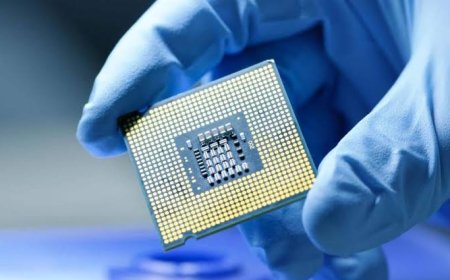The hidden power of technology: Unraveling the mysteries of rare earth elements and promethium
In today's modern technological world, from smartphones to electric cars, from medical devices to space exploration—a group of unknown but essential elements are at work everywhere. They are the "Rare Earth Elements" (REEs). These 17 metallic elements, such as neodymium, europium, dysprosium, etc., are the main driving force behind the technology products in our daily lives.

The special properties of REEs are their magnetic, photoluminescent and catalytic properties. Without these elements, many modern technologies would be useless. For example, neodymium is used to make strong magnets, which are used in headphones, speakers and electric car motors. Europium is used to give LED lights a bright red color.
However, these elements are not only found in very small quantities in nature, but also separating them from minerals is complex and expensive. Currently, China leads the world in processing about 90% of REEs, which is a strategic challenge for other countries.
Promethium (Pm) is a special element among REEs. Discovered in 1945, this element exists in the Earth's crust in an amount of about 455 grams, and it has no stable isotopes. Due to its radioactive properties, it has long been out of reach for research.
Recently, scientists at the Oak Ridge National Laboratory in the United States were able to successfully determine the chemical properties of promethium. They dissolved promethium in water using a special organic ligand, then measured its atomic bond lengths using X-ray radiation. Through this study, scientists were able to fill an important gap in the lanthanide series.
The beta-emitting properties of the promethium-147 isotope make it suitable for making nuclear batteries. This type of battery was previously used in heart pacemakers and is currently being used to provide lighting in spacecraft. However, due to its radioactive nature, caution must be exercised in its use.
Processing REEs can be harmful to the environment, as it uses toxic chemicals and generates waste. Therefore, scientists are now working to develop environmentally friendly and sustainable processes. For example, Apple has announced that it will use 100% recycled REEs in its products by 2025.
This research and technology development could be a big opportunity for developing countries like Bangladesh. If we can master the recycling and environmentally friendly processing of REEs, we can play a significant role in the global technology supply chain.
Rare earth elements are the unsung heroes of our modern lives. Unraveling the secrets of elements like promethium could brighten the future of our technology. However, there are environmental and strategic challenges in processing and using these elements, which we need to consciously address.
References:
1. "Rare Earth Elements Tech: Expert Guide to 2025 Innovations" [ Discovery Alert ]
Source link: https://discoveryalert.com.au/news/rare-earth-elements-2025-technologys-hidden-powerhouse/
2. "Rare earth element that glows violet has scientists excited about the future" [ Earth.com ]
Source link: https://www.earth.com/news/promethium-rare-earth-element-elusive-properties-finally-decoded-after-80-year/



















































